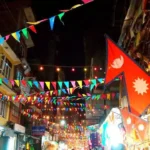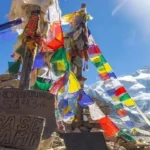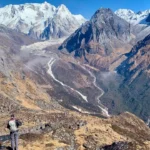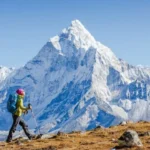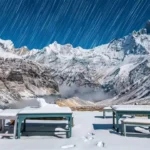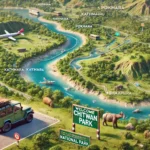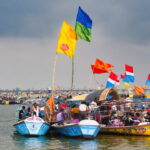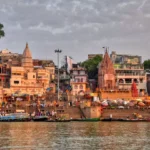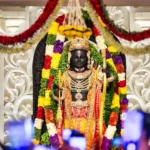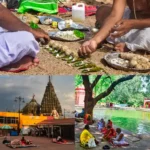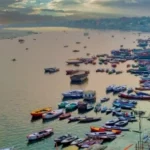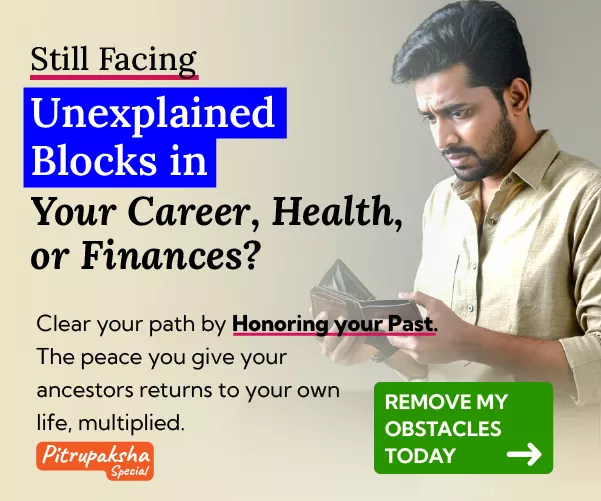Understanding Nepal UNESCO World Heritage Sites
Before we embark on our exploration, let’s briefly understand what makes a UNESCO World Heritage Site special. To be included on the World Heritage List, sites must meet at least one of ten selection criteria, demonstrating exceptional cultural or natural significance.
- Cultural Heritage Sites: Include monuments, groups of buildings, and sites possessing historical, aesthetic, archaeological, scientific, ethnological, or anthropological value.
- Natural Heritage Sites: Are natural features, geological formations, habitats of threatened species, or areas with scientific, conservation, or aesthetic importance.
Designation as a World Heritage Site signifies international recognition of a place’s importance to humanity and underscores the collective responsibility to protect and preserve it for future generations. Nepal proudly hosts four such sites: two cultural and two natural.
1. Kathmandu Valley (Cultural Heritage Site – Inscribed 1979)
The Kathmandu Valley is not just one location but a sprawling cultural landscape encompassing seven distinct Monument Zones. Inscribed in 1979, this site is a testament to the unique fusion of Hinduism and Buddhism that defines Nepalese culture, reflected in its extraordinary concentration of temples, stupas, palaces, and artistic traditions. The valley was the historical heartland of the Newar civilisation, whose artistic and architectural prowess reached astonishing heights, particularly during the Malla dynasty (12th-18th centuries).
Despite challenges, including rapid urbanisation and the devastating 2015 earthquake, the spirit and beauty of these sites endure, offering a captivating glimpse into Nepal’s soul.

Let’s explore the seven Monument Zones within the Kathmandu Valley World Heritage Site:
a) Pashupatinath Temple
- Significance: Nepal’s most sacred Hindu temple complex, dedicated to Lord Shiva (Pashupati, Lord of the Animals). It’s a sprawling collection of temples, ashrams, images, and inscriptions along the banks of the holy Bagmati River.
- Highlights: The main pagoda-style temple with its gilded roof and silver doors (entry restricted to Hindus), the bustling atmosphere of pilgrims and Sadhus (holy men), and the open-air cremation ghats along the riverbank, offering a raw and profound perspective on life, death, and rebirth in Hindu tradition. Witnessing the evening Aarati (fire worship ceremony) is a mesmerising experience.
- Architecture: Dominated by the two-tiered golden pagoda roof, intricate wood carvings, and silver-plated doors. The surrounding area features numerous smaller shrines and lingams.
- Visitor Tip: Dress respectfully. Be mindful and respectful when observing cremation ceremonies from across the river.
b) Swayambhunath Stupa (The “Monkey Temple”)
- Significance: One of the oldest and most revered Buddhist stupas in Nepal, perched atop a hill overlooking Kathmandu Valley. Legend states the valley was once a lake, and a lotus flower bloomed where Swayambhunath now stands. It symbolises Nepal’s harmonious blend of Buddhism and Hinduism.
- Highlights: The iconic white dome, topped by a gilded spire, is painted with the watchful eyes of the Buddha looking in all four directions. The steep climb up 365 steps is rewarded with panoramic city views. The complex includes smaller shrines, temples, Tibetan monasteries, and resident monkeys (hence the nickname). Circumambulating the stupa clockwise while spinning prayer wheels is a common devotional practice.
- Symbolism: The dome represents the womb or creation, the 13 tiers of the spire symbolise the stages to enlightenment, and the eyes signify wisdom and compassion.
- Visitor Tip: Visit early morning or late afternoon for the best light and atmosphere. Beware of the monkeys – don’t feed them and keep belongings secure.
c) Boudhanath Stupa
- Significance: One of the largest spherical stupas in the world and a focal point for Tibetan Buddhism in Nepal. Located on the ancient trade route from Tibet, it has attracted Tibetan merchants and refugees for centuries, creating a vibrant Himalayan Buddhist community around it.
- Highlights: The colossal mandala structure, the massive white dome, the all-seeing eyes of Buddha, and the colourful prayer flags fluttering in the breeze. The atmosphere is deeply spiritual, with pilgrims circumambulating the stupa, chanting mantras (Om Mani Padme Hum), and spinning prayer wheels. The surrounding area is filled with monasteries, gompas, and shops selling Tibetan crafts and religious items.
- Experience: Join the Kora (circumambulation), especially during mornings and evenings, soak in the peaceful energy, and enjoy rooftop cafes overlooking the stupa.
- Visitor Tip: Circumambulate clockwise. Consider visiting during Tibetan festivals like Losar for a vibrant cultural experience.
d) Kathmandu Durbar Square (Hanuman Dhoka)
- Significance: The historical heart of Kathmandu city, where kings were once crowned and ruled. This square showcases spectacular traditional architecture, palaces, courtyards (chowks), and temples built between the 12th and 18th centuries by the Malla and Shah kings.
- Highlights: The Hanuman Dhoka Palace complex (named after the monkey god Hanuman, whose statue guards the entrance), the Taleju Temple (accessible only during Dashain), the Kasthamandap (legend says it was built from the wood of a single tree, and gave Kathmandu its name – heavily damaged in 2015, now reconstructed), and the Kumari Ghar (House of the Living Goddess). Witnessing the Kumari, a young girl revered as a living embodiment of the goddess Taleju, appearing at her window is a unique cultural encounter.
- Challenges: The square suffered significant damage in the 2015 earthquake, but extensive restoration work has been ongoing, showcasing Nepal’s resilience.
- Visitor Tip: Allow ample time to explore the intricate courtyards and temples. Check timings for the Kumari’s appearance.
e) Patan Durbar Square
- Significance: Located in the city of Lalitpur (historically known as Patan), this square is often considered the most artistically stunning of the three Durbar Squares in the valley. It’s a concentrated showcase of Newar artistry in wood and stone carving, metalwork, and temple design.
- Highlights: The ancient Royal Palace complex, the intricately carved stone Krishna Mandir (one of Nepal’s finest examples of Shikhara-style architecture), the Bhimsen Temple, the Golden Temple (Hiranya Varna Mahavihar) located nearby, and numerous other temples and courtyards. The Patan Museum, housed within the palace complex, offers exceptional exhibits on Nepali art and history.
- Artistry: Patan is renowned for its skilled artisans, and the square is a living museum of their craftsmanship.
- Visitor Tip: Combine a visit with exploring the surrounding narrow alleys filled with artisan workshops. Don’t miss the Patan Museum.

f) Bhaktapur Durbar Square
- Significance: Located in the ancient city of Bhaktapur, this square feels like a step back in time. Bhaktapur is often regarded as the best-preserved medieval city in Nepal, retaining a distinct traditional character. The square is larger and more spacious than its Kathmandu and Patan counterparts.
- Highlights: The magnificent 55-Window Palace, the Golden Gate (Sun Dhoka), the Taleju Temple, the National Art Gallery, and nearby squares like Taumadhi Square (home to the towering Nyatapola Temple, Nepal’s tallest pagoda) and Dattatreya Square (with its intricately carved Pujari Math). Bhaktapur is also famous for its pottery and traditional crafts.
- Atmosphere: Less congested than Kathmandu, Bhaktapur offers a more immersive experience of traditional Newari life, with cobbled streets, local artisans at work (especially potters in Pottery Square), and a slower pace.
- Visitor Tip: Allow a full day to explore Bhaktapur city, including its various squares and side streets. Try the local yoghurt, Juju Dhau (King Curd).
g) Changu Narayan Temple
- Significance: Perched on a hilltop overlooking the valley, Changu Narayan is often cited as the oldest Hindu temple still in use in the Kathmandu Valley. Dedicated to Lord Vishnu, the temple complex contains inscriptions dating back to the 5th century, providing crucial historical records.
- Highlights: The main two-tiered pagoda temple is adorned with exquisite wood and stone carvings depicting Vishnu and his avatars. The surrounding courtyard features ancient stone sculptures, including a famous Garuda statue and depictions of Vishnu’s various forms. The location offers serene views of the surrounding countryside.
- Historical Value: The Lichhavi-era inscriptions found here are invaluable for understanding Nepal’s early history.
- Visitor Tip: It’s slightly more remote than other sites, often visited as part of a day trip combined with Bhaktapur. The peaceful setting is a welcome contrast to the busier squares.
2. Sagarmatha National Park (Natural Heritage Site – Inscribed 1979)
Shifting from cultural marvels to natural wonders, Sagarmatha National Park is synonymous with the world’s highest peak: Mount Everest (known as Sagarmatha in Nepali and Chomolungma in Sherpa/Tibetan). Located in the formidable Khumbu region of northeastern Nepal, this park encompasses an area of dramatic mountains, glaciers, and deep valleys dominated by the Himalayan range.
Key Features & Significance:
- Majestic Peaks: Home to Mount Everest (8,848.86 meters / 29,031.7 ft) and other towering peaks like Lhotse, Cho Oyu, Nuptse, Pumori, and Ama Dablam. The landscape is a geologist’s and mountaineer’s dream.
- Unique Biodiversity: Despite the harsh alpine environment, the park supports diverse flora and fauna adapted to high altitudes. This includes the elusive Snow Leopard, Himalayan Tahr, Musk Deer, Red Panda (rare), and numerous bird species like the Himalayan Monal (Nepal’s national bird). Vegetation ranges from pine and hemlock forests at lower altitudes to dwarf shrubs and alpine meadows higher up.
- Sherpa Culture: The park is the traditional homeland of the Sherpa people, renowned for their mountaineering skills and unique Tibetan Buddhist culture. Villages like Namche Bazaar (the bustling hub of the Khumbu), Khumjung, Thame, and Tengboche (with its famous monastery) are integral parts of the park experience, offering insights into Sherpa life, traditions, and spirituality.
- Glaciers and Rivers: The park contains major glaciers like the Khumbu Glacier and rivers like the Dudh Kosi, carving deep gorges through the landscape.
- Trekking Destination: Sagarmatha National Park is arguably the world’s most famous trekking destination, attracting thousands annually who undertake treks like the Everest Base Camp (EBC) trek, Gokyo Lakes trek, and Three Passes trek. These journeys offer unparalleled mountain scenery and cultural immersion.
- Conservation Challenges: The park faces pressures from climate change (glacial melt, changing weather patterns) and the impacts of high tourism levels (waste management, trail erosion). Conservation efforts focus on sustainable tourism, wildlife protection, and community involvement.









